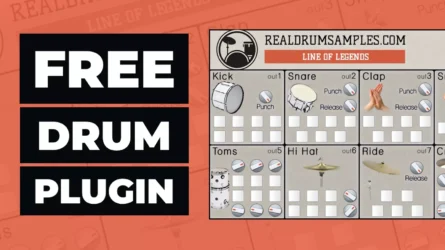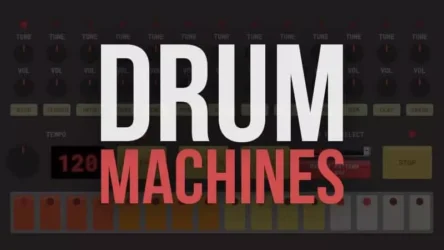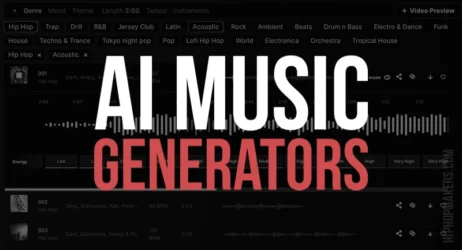This guide will answer what is a metronome, its purpose, if they are necessary, and how to use metronomes when playing a musical instrument.
What Is A Metronome?
A metronome is a device that produces an audible beat at a regular interval to keep musicians playing at a consistent tempo. It provides the musician with a constant tempo to practice their music at the right rhythm and helps with timing and accuracy.
- What Is A Metronome
- Importance Of Metronomes
- What Is The Purpose Of A Metronome
- Does A Metronome Really Help
- How Do You Read A Metronome
- How To Use A Metronome
- How Accurate Are Metronomes
- Is A Metronome Necessary For Piano
- Learn Rhythm With A Metronome
- Popular Metronomes

Related: 10 Free Online Metronome Apps
What Is A Metronome?
A metronome is an instrument that produces regular beats, which aid in playing music at a particular tempo. It helps piano students with rhythm, timing, and accuracy.
Most metronomes also include two or more sounds to use, such as a ticking sound for beats and sometimes cymbals or drums for some kinds of music. It can also help you stay on tempo when playing with other musicians by matching the same beat.
Additionally, metronomes allow the musician to easily adjust the tempo depending on how fast or slow they’d like to play.
What Are The Types Of Metronomes?
There are three main types of metronomes: mechanical, quartz, and digital.
1. Mechanical Metronome
A mechanical metronome is a device that was first built during the 19th century, and it produces a ticking sound at regular intervals. It’s a handheld device that may also include a drum or string inside, and it’s one of the first types of metronomes.
2. Quartz Metronome
A quartz metronome is a battery-powered device that produces an electronic tone at regular intervals, and it’s one of the most accurate kinds of metronomes. This type is sometimes used to practice with other musicians because it provides the exact timing as another device running on quartz.
3. Digital Metronome
A digital metronome, also known as an electronic metronome, is a device that produces regular beats using electronics. It’s a digital device that may include a dial, buttons, or touchscreen for setting the tempo and changing sounds.
What Is The Importance Of Metronomes In Music?
Metronomes are an essential tool for musicians because they give them a consistent beat that they can play along with. It helps with timing, accuracy, and rhythm.
Playing with a metronome teaches musicians how to keep to a steady tempo without wavering as they play. Some musicians even use it as a guide and try to match their music with the metronome’s beat, allowing themselves to play at the same speed as the metronome.
What Is The Purpose Of A Metronome?
The purpose of a metronome is to provide the musician with a steady beat that can be easily adjusted to help keep the musician on tempo while playing. It can also help with timing, accuracy, and rhythm.
A metronome is used for different things depending on whether a musical student or professional musician uses it. Most importantly, it’s used for practicing music so that it’s played correctly and on time.
It’s especially important when playing with other musicians, so everyone is in sync while performing together. This way, the music sounds good and is played accurately without mistakes or missteps.
However, amateur musicians can also use a metronome to practice their skills and get better at playing their instruments.
Does A Metronome Really Help?
Yes, a metronome can really help with rhythm and timing in music, especially in the beginning when a musician is still learning.
Indeed, a metronome will not make a musician play music correctly if they don’t practice themselves correctly. However, it does help them to learn new songs faster or get back on track if they get off tempo or lose their place while playing.
It can also help them adjust to different tempos and keep the same rhythm and timing in various styles of music.
Metronomes can also help musicians be more accurate with their notes and chords because they can keep track of the beat and find their notes at the right time. This helps with playing music more accurately, which will help the musicians to sound better and play more in tune.
How Do You Read A Metronome?
It’s important to know how to read a metronome, which can confuse beginners. This is why knowing the terminology and reading a metronome go hand-in-hand.
A metronome has numbers: the number on the left is the number of beats per minute, while the right number tells you which beat to start counting. For example, if you have a metronome set at 60 BPM with 8 on the left, you would start counting at the 8th beat.
Another thing that’s important to know is how to read sheet music: it doesn’t show the song’s tempo but shows you which beats to count. So, using a metronome while reading sheet music will help you be on time with the beat and learn how to play at a steady tempo.
How To Use A Metronome?
Using a metronome is not as hard as it sounds. It just takes a little practice and patience to get the hang of it. Here are the steps to using a metronome:
1. Adjust Your Tempo
Start with 60 BPM, and increase or decrease depending on how fast or slow you’d like to play. If you’re just starting, it’s best to start at 60 and then increase the tempo as you get better.
Read the sheet music carefully, and look at where the tempo changes on the page. This will help you know when to start counting at the beat.
2. Strumming Pattern
Once you have the tempo down, it’s time to practice counting as you strum. To do this, practice strumming a chord and counting for each beat. Remember to keep the rhythm going – you have to be constantly playing for the metronome to work.
After practicing this, try to play a chord change with each beat. It’s also best to try playing just three chords or so, then working up to more as you get better at it.
3. Metronome Exercises
After you have adjusted to your strumming pattern, it’s time to switch things up. Try changing up your strumming pattern and work on keeping the beat going at a steady speed. You can also try practicing chords or scales.
Start by playing just two chords, then gradually increase the number of chords or notes you play. You can also change up your strumming pattern. Instead of counting for each beat, try to count every four beats with your strumming pattern.
The most important part of using a metronome is practicing and getting used to playing with a steady beat. If you don’t, it won’t help you improve your timing. It also won’t help you if you don’t use it correctly, so make sure you practice the right way.
How Accurate Are Metronomes?
They are fairly accurate, but it won’t sound correct if they’re not set to the right tempo. Some digital metronomes include an LCD screen which allows you to input the tempo and save it. This feature makes sure that the metronome is always accurate and at the right speed, which is great for practicing music.
Is A Metronome Necessary For Piano?
Whether or not a metronome is necessary to use depends on the person and their musical skill level. Most professionals would say that it’s unnecessary since they already know how to keep time and play their instruments accurately.
However, beginners or still-learning musicians may find that it helps them practice more efficiently.
A metronome is more necessary for some instruments than others but can be helpful with most. Instruments that are easier to play out of time or lose track of the beat are the ones that may benefit most from using a metronome.
For piano, it can be helpful in learning new songs if the student is interested in using a metronome to learn the rhythm and tempo of their pieces. Otherwise, they’ll have to play without it until they’re ready to focus more on timing and rhythm.
How Do You Learn Rhythm With A Metronome?
The best way to learn rhythm with a metronome is to start with the most basic beats. A simple quarter-note beat will work for most beginners and get them used to playing with a steady beat.
Start by practicing the metronome for just a few minutes at a time. Once your muscles get used to playing with the beat, you can increase the length of time you play.
Another good exercise is to play along with the metronome. This will help you work on timing yourself and get used to playing with a steady beat in your head.
Play along with the metronome and tap on your legs or feet to the beat to further develop your rhythm. You can also clap or sing songs to help develop your rhythm and learn songs faster.
Summary of Metronomes
Metronomes produce a ticking sound at regular intervals to keep musicians playing at a consistent tempo. Practicing music at a constant tempo helps musicians learn timing and accuracy and keep the right rhythm.
I hope you now understand metronomes and how to use them when playing any musical instrument.




